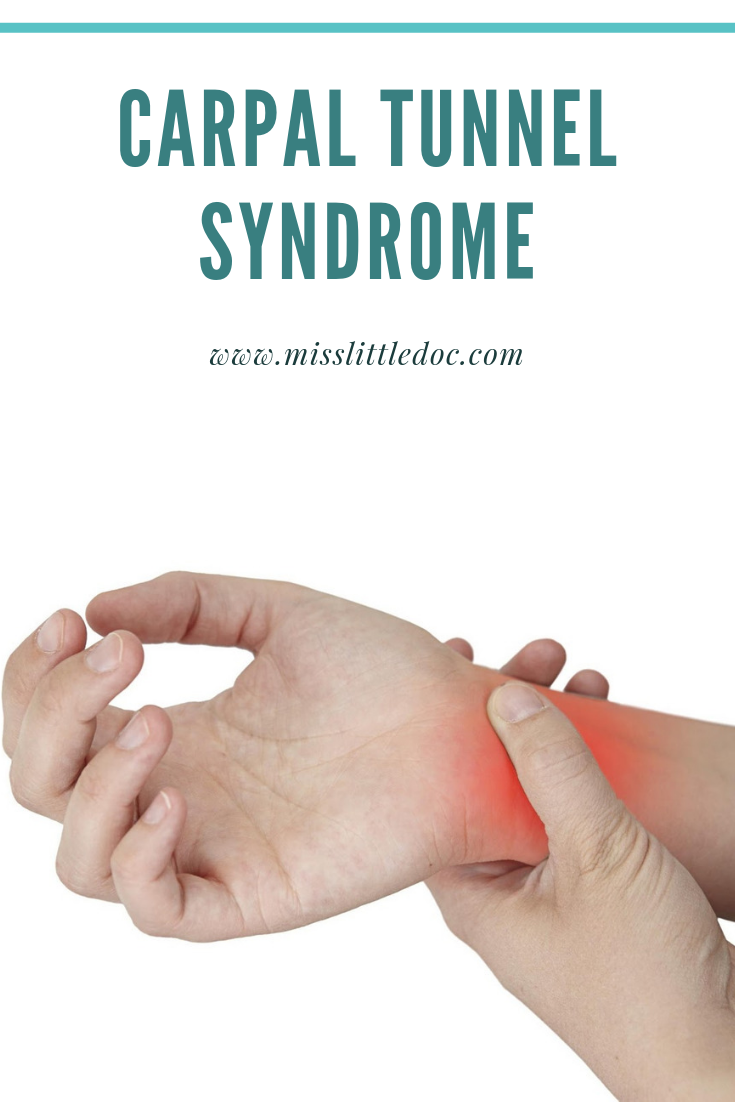Carpal Tunnel Syndrome
Carpal tunnel syndrome is a condition that causes pain, numbness, and tingling in the hand. The condition occurs when one of the major nerves to the hand, the median nerve, is compressed as it travels through the wrist.
Symptoms usually start gradually, with frequent burning, tingling, or itching numbness in the palm of the hand and the thumb and the index and middle fingers. Some carpal tunnel sufferers say their fingers feel useless and swollen, even though little or no swelling is apparent.
Anatomy of the wrist
The carpal tunnel is a pathway about an inch wide that is formed by bones called carpal bones, with the roof being a ligament called the transverse carpal ligament. The boundaries are very rigid so the carpal tunnel has little capacity to stretch or increase in size.
The median nerve is one of the main nerves in the hand that goes through the carpal tunnel. It originates as a group of nerve roots in the neck (called the brachial plexus). These roots come together to form a single nerve in the arm. The nerve provides feeling in the thumb and index, middle, and ring fingers and controls the muscles around the base of the thumb.

The nine tendons that bend the fingers and thumb also travel through the carpal tunnel. These tendons are called flexor tendons.
Diagnosis
There are several other things that can be misdiagnosed as Carpal Tunnel Syndrome. To make sure that the numbness and tingling isn’t coming from your neck or your elbow, there are a couple of orthopedic tests that can be preformed to diagnose it properly.
—The Tinel test– the doctor taps on or presses over the median nerve in the person’s wrist. The test is positive when tingling occurs in the affected fingers.
—Phalen’s maneuver (or wrist-flexion test)- involves the person pressing the backs of the hands and fingers together with their wrists flexed as far as possible. This test is positive if tingling or numbness occur in the affected fingers within 1-2 minutes.
–Doctors may also ask individuals to try to make a movement that brings on symptoms.
Treatment
Bracing or splinting– Wearing a brace or splint at night will keep you from bending your wrist while you sleep. Keeping your wrist in a straight or neutral position reduces pressure on the nerve in the carpal tunnel. It may also help to wear a splint during the day when doing activities that aggravate your symptoms.
–Nonsteroidal anti-inflammatory drugs (NSAIDs). Medication such as ibuprofen can help relieve pain and inflammation.
–Activity changes. Symptoms often occur when your hand and wrist are in the same position for too long. If your job or recreational activities aggravate your symptoms, changing or modifying these activities can help slow or stop progression of the disease. In some cases, this may involve making changes to your work site or work station.
–Nerve gliding exercises. Some patients may benefit from exercises that help the median nerve move more freely within the confines of the carpal tunnel.
Chiropractic Care
At our office, we use high volt and ultrasound along with cold laser and adjusting. Bracing the wrists are very effective between treatments. As well as, trying to avoid a lot of wrist movements (such as typing).
If you are having pain in your wrists, give us or a chiropractor near you a call. Wrist pain can be coming from a couple of different areas. If you have been diagnosed with carpal tunnel, give us a call ASAP! The sooner you get treated the sooner you can get over it and be fully functional again!
~Dr. Lacey~
Carder Chiropractic Clinic, INC.
El Reno, OK 73036



